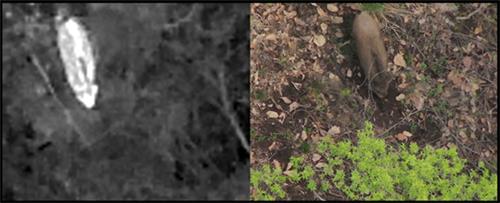
The National Institute of Biological Resources (NIBR) announced on Tuesday that it has developed standardized wild boar detection techniques optimized for local mountainous areas and successfully modeled a three-dimensional boar habitat using LiDAR sensors. (Image courtesy of Yonhap)
SEOUL, Sept. 27 (Korea Bizwire) – Wild boars are known to traverse densely wooded ridges with steep slopes and engage in foraging activities in areas with fewer trees and gentler slopes, followed by resting in densely wooded hills.
The National Institute of Biological Resources (NIBR) announced on Tuesday that it has developed standardized wild boar detection techniques optimized for local mountainous areas and successfully modeled a three-dimensional boar habitat using LiDAR sensors.
According to its research findings, wild boars tend to move from areas with high canopy cover and a low leaf area index around the slightly steep slopes of ridges. Canopy cover refers to the proportion of the forest floor covered by the vertical projection of the tree crowns, while the leaf area index represents the leaf area per ground unit.
Foraging activities of wild boars primarily occur in areas with less steep slopes, low canopy cover, and a low leaf area index. They seek rest in hill areas between ridges and low-lying lands characterized by high canopy cover and a substantial leaf area index.
The NIBR emphasized that the utilization of drones for the detection of wild boars can aid in determining the density of wild boars in hard-to-reach areas, thus significantly contributing to damage prevention caused by wild boars.
Kevin Lee (kevinlee@koreabizwire.com)






